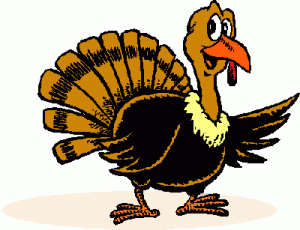The Thanksgiving holiday is almost upon us, and if you’re like us food allergies can take center stage! This can be a wonderful time of joy and sharing time with friends and extended family members. It can also be a stressful time worrying about what your child eats or what food is being served!
A plan of action before the day is a must.
We have spent Thanksgiving Day at home and at the home of relatives. I’ve found myself being more comfortable in the safety of our home because I know what foods have been made in the kitchen. If your child has pet allergies in addition to food allergies, as our son does, then all celebrations need to occur in a safe location. For years, that was at our house, because all the relatives had dogs or cats.
When we do go out of town, we have rented a condominium that is pet and smoke free, and then we invite the relatives there. If you don’t have these multiple limitations, you can still choose a safe location where the food can be monitored in its preparation. This might end up being at your house to ensure no cross-contamination issues.
Plan for the food.
We have found that it works best if we give our relatives a list of food items that our son cannot eat. We have explained to them the seriousness of the potential reaction, and that he cannot even touch peanuts, tree nuts, sesame seeds, fish and shellfish. I can tell you that the best laid plans still aren’t followed in the cases of some families like ours! At times like this, we’ve found that it’s best to get out of their kitchen, and carefully monitor our son’s whereabouts. If possible, we remove the offending food item, especially if it won’t seriously damage the family relationships.
Make sure that you read all labels of any store-bought products.
Natural flavors can include almost anything. Call the product manufacturer prior to the day of Thanksgiving to ensure the product is safe. Waiting until the day of Thanksgiving will be too late, since most manufacturers are closed for the holiday! For home baked items we’ve found it’s best to make them ourselves. There’s always a chance of a peanut butter sandwich being in the kitchen while the other food items are prepared at someone else’s house. Where we would be careful about such a chance of cross-contact, people unaware and inexperienced with food allergies wouldn’t necessarily take such a precaution.
Traveling with Food Allergies
Traveling by car is easier than traveling by plane, especially if you plan on bringing safe foods from home. We’ve traveled many times by car, and brought a cooler of food. I’ve even heard of some families traveling with a refrigerator and microwave to ensure safe meals for a long road trip! Some airlines will announce a peanut-free flight; however I’ve heard from many families that giving the airlines the information about your child’s peanut allergies at the time of reservations doesn’t necessarily mean the flight will be peanut-free when you arrive at the airport. Various airlines have information on their websites stating they are peanut-free, yet I’ve seen these exact airlines serve nut and peanut products!
Find out what is being served on the flight when you make a reservation and request a peanut-free flight. Then be prepared to speak with the ticket agent and others when you arrive at the airport. Bring hand wipes, and even a twin sized sheet to put on the airline seat to protect your child from having any contact reaction. Traveling in the morning is better because the planes tend to be cleaner. Let the flight attendant know about your child’s food allergies. With so many people bringing food onto airline flights today, there’s a high likelihood that someone will bring on peanuts or nuts to eat while in flight. You may be able to change seats should that someone be seated right next to you! The flight attendant may also be willing to announce a peanut-free flight over the loudspeaker, or provide a 3 row buffer zone in front of and behind you.
My son and I have flown Southwest Airlines for the past several years, and have had very good experiences overall. While other flights are served peanuts, our flight is not. When we purchase the tickets online, there’s an area to mark a disability. Peanut dust allergy is listed in this area. When we arrive at the airport, my son is given a pre-boarding pass which allows us to pre-board the plane, wipe down his seat, tray table and surrounding area. He has never had an issue with any peanut residue left from previous flights, but if your child is HIGHLY sensitive this airline may not be your best choice.
Plan for the fun.
We try to focus as much on non-food fun for our son’s sake so that the entire holiday doesn’t end up being a long list of don’ts. We take a walk, play board games, and play cards. We make sure that every visitor is aware of our son’s allergies so that they can protect him from harm. Morgan’s allergies were better understood by the other children in the family– almost more than the adults – when he was young! The children wanted Morgan to be a part of the fun, so they were careful about their food choices.
We have more information about traveling and eating out with food allergies click here
Let me know what has worked for you on Thanksgiving by emailing me – Nicole at AllergicChild.com .
